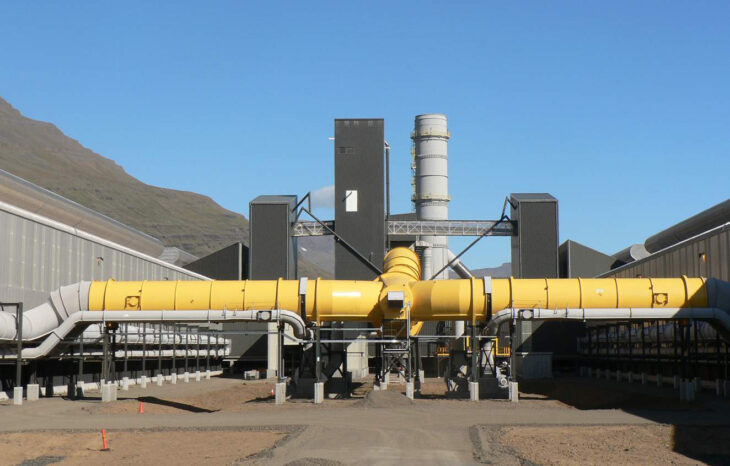Rio Tinto, Trimet, and Aluminium Dunkerque are partnering with Fives Group on a consortium project to develop carbon capture solutions for the aluminum industry. Primary aluminum production accounts for 2% of global greenhouse gas emissions, which corresponds to an average of 16.1 t CO2/t Al being emitted globally (in France, the average is less than 5 t/CO2). This consortium, which brings together the world’s leading expertise to implement an innovative process, aims to achieve a 50% reduction in direct CO2 emissions (excluding energy sources) from primary aluminum production by 2030.
“Working in partnership guarantees the development of solutions that meet the needs of the field and are tested immediately under real operating conditions,” said Sebastien Gauguier, CEO of the Aluminium Division at Fives. “Combining the experts in each technology means that a complete, high-performance solution can be achieved quickly.”
With more than 60 years of experience in the capture and processing of industrial emissions, Fives has unique expertise to contribute to the production of greener aluminum. The company has worked with numerous industrial companies in every sector to achieve decarbonization of the industry, including the use of hydrogen fuel, the digitalization of industrial processes, and the utilization of knowleldge from advanced research centers. Now, the company is its partnership approach to carbon capture.
In addition, Rio Tinto, one of the world’s largest aluminum producers, will provide its expertise in the electrolysis process, and Trimet and Aluminium Dunkerque will combine their expertise to help develop this technology on their respective sites in St Jean de Maurienne, France.
Developing Carbon Capture
Aluminum is a strategic material for the low-carbon transition (lighter, more workable and recyclable). Its use contributes to the lightening of vehicles, in which its share is expected to grow by 13% between 2014 and 2050. Demand for aluminum in connection with electrification will also increase, as will requirements in the packaging sector, due to the elimination of single-use plastics, its light weight, and excellent recyclability. Aluminum is one of the most easily recyclable metals and fits in perfectly with the development of a circular economy that consumes less energy and resources. Volumes are therefore expected to rise sharply in the coming years — and therefore, there is a corresponding need to address the carbon emissions associated with this increased production.
The consortium development project involves using carbon capture technologies to collect the carbon emitted during the production of primary aluminum, then the processing and capture of these gases. The aim of the project is to help design, prototype, and develop this technology for the aluminum sector. While the carbon capture process has already been tried and tested in various industrial sectors, such as petrochemicals and thermal power stations, it is still at the industrial research stage for aluminum.
The carbon capture process involves three main steps:
- Collection of CO2-laden gases as close as possible to the source of emission in the electrolysis pot. This choice optimizes the concentration rate and the volume of CO2 collected in the flue gas.
- Installation of an innovative gas treatment center to purify these gases, which are more concentrated than usual, to make them compatible with the CO2 capture process.
- Capture of CO2 using an absorption process with amine solvents.
The project, which is part of the France 2030 investment plan, will shortly be submitted to the French Environment and Energy Management Agency (ADEME).
As the first step towards radical decarbonization, the project comprises two main stages at the Trimet St Jean de Maurienne and Aluminium Dunkerque sites, with the aim of reducing emissions by 50% by 2030. Stage one involves experimentation in test pots and prototype installation of the carbon capture technology during the 2024 to 2027 period. The second stage will focus on industrial deployment of the technology on part of the sites begining in 2028.

